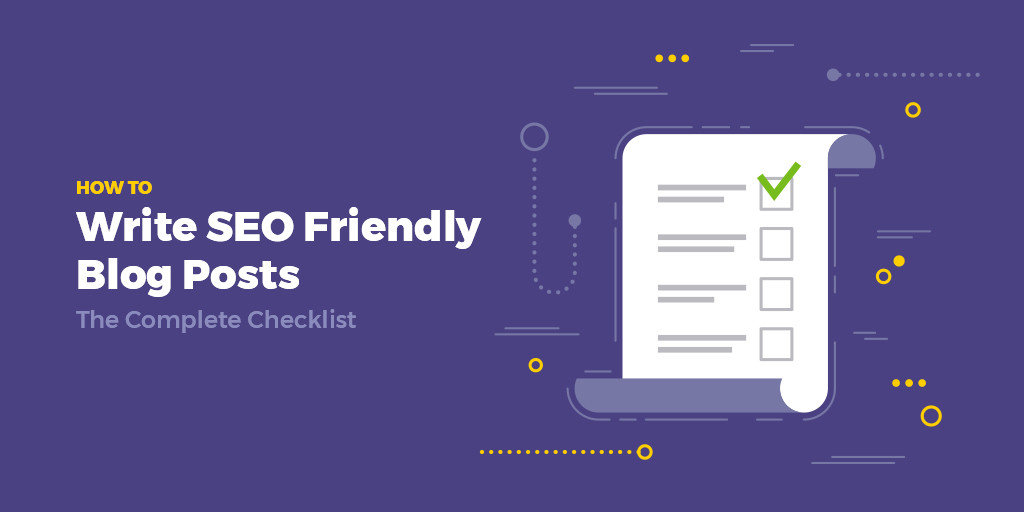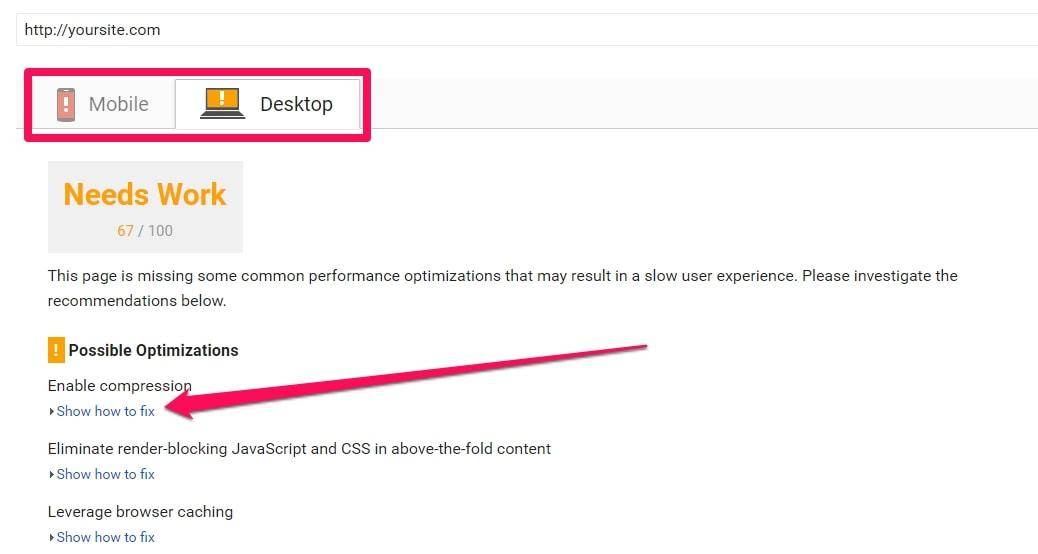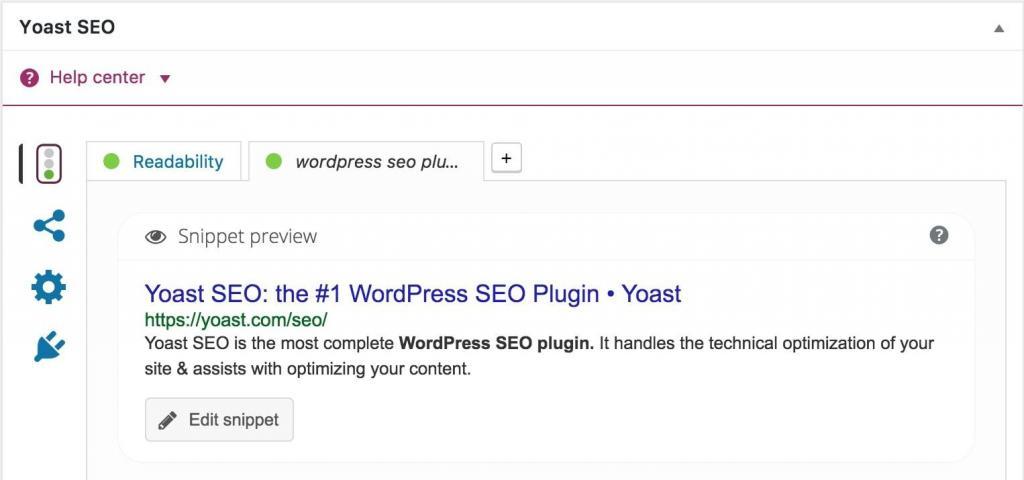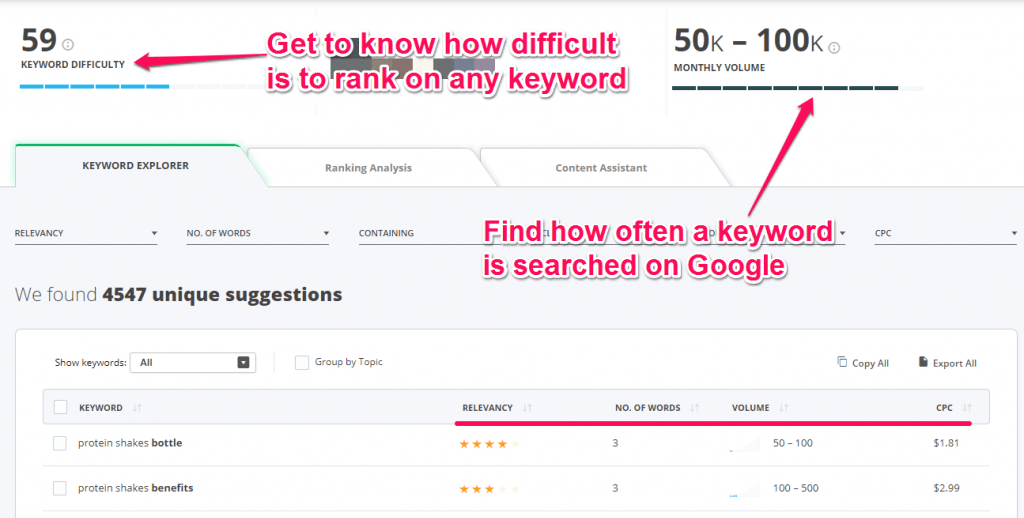Writing for SEO purposes can be difficult and time consuming. However, it’s time well spent, as SEO helps us rank better in the search engines.
How do you write an SEO-friendly blog post, you might ask? Using a step-by-step SEO checklist, of course! By the end of this article, you’ll know exactly how to write search engine friendly blog posts. So, give it a good read!

Don’t loose time! Below you can find the full checklist you should follow if you want to have SEO friendly blog posts.
Download The SEO Friendly Blog Posts Checklist
Writing
- Setup Website/Blog
- Perform Keyword Research
- Check Competition
- Gather Information for Writing
- Outline the Article
- Write Your Content
- Add Optimized Images
- Add Video Content
- Create the Title Tag of the Blog Post
- Create the Meta Description
- Blog Post Heading H1
- Write Optimized URL
Before Publishing
- Add a Featured Image
- Categories & Tags
- Social Media Optimization
- Take Authorship
- Proofread
- Verify Links
- Are Share Buttons Functional?
- Publish the Blog Post
After Publishing
- Share on Social Media
- Build Base Links
- Read Comments and Reply to Them
- Upgrade Your Article
- Maximize/Repurpose Your Content
Writing
1. Setup Website/Blog
The first step in creating a well-optimized blog post is to make sure you website is correctly set for SEO. This is something that you will do only once, but it does depend on the platform you’re website is built on.
In the checklist, you can find this section in a separate sheet/tab, at the bottom of the screen. Make sure you take a look before you start writing.
Mobile Friendly:
Ensure your website is mobile friendly using the Google Mobile Friendly Test Tool. Google tends to rank sites lower if they are not optimized for mobile platforms, so make sure you fix this issue.
More than 50% of all web traffic has migrated to mobile devices in the past couple of years. This means that most of your readers will be on mobile devices as well.
Look for a responsive theme/template or use relative values instead of absolute ones in your code.
Site Is Indexable:
If your site can’t be found by Google and listed into the search engine results, you’re also wasting your time.
Problems that lead to bad indexing are usually related to the NoIndex meta tag, or the robots.txt file. Make sure the pages you want indexed are not blocked in any way. Also, ensure that extra pages you don’t really need in the search engine are blocked.
To block a page, simply edit your robots.txt file:
|
1 2 3 4 |
User-agent: * Disallow: /cgi-bin/ Disallow: /tmp/ Disallow: /~joe/ |
You can also use the following tag in your HTML on specific pages:
|
1 |
<meta name="robots" content="noindex"> |
Check Site Speed:
The speed at which your website loads is very important for your business. If your users don’t see the content fast, they will abandon the page. There are two big factors that determine speed: the server on which the website runs, and the content that must be loaded.
Use Google PageSpeed Insights to determine if there are any issues with your website’s server and structure. Another great tool to do this is GT Metrix.

Try to fix those issues first. If your website loads very slowly, it won’t matter how well you write. Nobody will ever get to read it.
Install SEO Plugins:
If you’re using a popular CMS such as WordPress, Joomla or Drupal, you can make your site easy to optimize by installing a plugin. These plugins will help you optimize your content’s key elements (title, meta description) a lot easier. It will also fix some SEO issues commonly found on different platforms.
Some suggestions are: Yoast SEO and All in one SEO Pack for WordPress, Easy Frontend SEO for Joomla, and SEO Tools for Drupal.

Install Social Sharing Plugins:
Writing a good article is nothing without promotion. Chances of writing something that will go viral on its own are very small. If you’re using one of the popular CMS mentioned above, you should also install a social sharing plugin.
Some good examples are Fast Social Share for Joomla and WP Social Share for WordPress. There are many options out there, so make your pick based on design and user reviews.
These plugins will help readers share the content and make it more popular. As you probably know, social media is one of the biggest marketing channels out there. It would be a complete waste not to take advantage of it!
Readability:
Your blog posts should be easy to read. First, make sure your text is easy to understand. Have short sentences, and try to make the paragraphs shorter in width.
Ensure your background color doesn’t conflict with the font color. Some combinations make it harder for the user to read your posts.

The best combination for legibility is usually black text on white or light gray background. However, you can use different combinations to express different things.
We recommend that the paragraphs are 11-12 pixels in size. Also, keep a hierarchical structure in your headings. H1 should be the biggest, H2 smaller and so on.
Last but not least, place ads smartly, without spamming the user. Avoid random pop-ups or pop-ups that appear as soon as you access the page.
Customizable Elements and Meta-Tags:
The post title and meta tags are two important elements that display in Google’s search results.

Make sure you can easily edit these elements. The page/blog post should also display a H1 tag containing the title of the article. Usually it’s the same as the title tag, but this is not mandatory.
Just like the post title, it should include keywords and be captivating. There should only be one H1 tag on your page. Other important meta are rel=”canonical” and rel=”prev/next”.
Canonical tags are used to solve duplicate content issues . If your page has comments, for example, some platforms create separate URLs ending in “/?replytocom=123#”. This can create conflicts between pages in the SERPS.
The canonical tag should point out what page you want to be displayed in Google. If the page has a self-referencing canonical tag, then all the comments’ URLs will point to the main page.
In case you have paginated content (on a blog page for example), you should use the previous/next meta tag. This technique can be used for guides separated in multiple pages.
2. Perform Keyword Research
Doing keyword research before writing a blog post can maximize the potential organic traffic you get from search engines. First of all, think of what your readers might be searching in order to find your content.
You can use the Google Keyword Planner to get an idea of what people are searching for. Another thing you can do is start typing keywords in Google and get ideas from the suggestions shown there.
Or, you can take it a step further and use the cognitiveSEO Keyword Tool.
It will show you search volume, keyword difficulty and top competitors ranking for specific keywords. The keyword suggestions there are the most relevant to your main keyword from an SEO perspective.

You can combine some of those into a more complex SEO title that targets multiple keywords at the same time. You can use other search queries that don’t fit in the title in your body.
3. Check Competition
After you choose some keywords, check the top 10 results for them to make an idea on who you will competing with.
You can use the cognitiveSEO tool to compare your site with the competition. The tool will analyze some of the most important metrics (like referring domains and anchor texts) and will make it very easy for you to decide how tough the competition is.

If you feel like the competition is too high, consider targeting other keywords. Some indicators of a strong SEO competition are: keyword in title, old domain age, domain and page performance and a big number of backlinks pointing to the competitors’ URLs.
4. Gather Information for Writing
To be able to pile up a really good piece of content, you need to gather the right resources. You will need to find at least 3 to 5 well documented and trustworthy sources. If you are writing a personal story out of the top of your head, you can skip this step.
However, we recommend that you read your top ranking competitors and see if you can spot any gaps. Then, gather information about those gaps and try to cover them up. You can use search operators to find really reliable information sources that can backup statistics, such as numbers or case studies. Examples: site:.gov + keyword, site:.edu + keyword
Create your own footprints for finding sources by using this list of search operators.
5.Outline the Article
Outlining the article will make it a lot easier for you to write it. It saves you time and effort. If you have a proper outline, the structure of your article will be easier to digest by your readers. Your outline should consist of some key points you want to cover up.
A good trick is to turn those key points into questions, which you will answer below. Consider building the outline as your H2 and H3 tags. These tags tell Google that those phrases are a little more important.
6. Write Your Content
 It’s finally time to start writing. There are many aspects to be considered in the process. I outlined them below, but they cannot be necessarily put in order.
It’s finally time to start writing. There are many aspects to be considered in the process. I outlined them below, but they cannot be necessarily put in order.
Make sure you consider all of them! OnPage SEO is what you have full control over, so try to do your best. Make sure you use the cognitiveSEO Content Assistant for maximum results!
- Bullets, Bolds, H2, H3: People like it when content is split up, because it is easier to read. Search engines like it as well. Use secondary keywords in the headings, and bold important words/phrases in your article.
- Use paragraphs: Use paragraphs and make them shorter, rather than longer. A paragraph should be around 5 sentences long.
- Use the main keyword in the first paragraph: Use the main keyword in the first paragraph of your blog post, and try to place it towards the beginning.
- Use attention grabbers: Phrases like “here’s the deal”, “here’s what I did”, “listen up”, “if you want to find out xyz, keep reading” help keeping readers on your page. The longer they stay, the longer you will benefit, and in time, your rankings will improve. You can check out some interesting info on dwell time and how it can influence your rankings.
- Use the main keyword in the article body: Use your keyword throughout the article, once around the middle, and once towards the ending.
- Keyword density of maximum 5%: You shouldn’t use your keyword more than 5 times per 1000 words. Usually, some words will repeat more than that, but when your main keyword is in the title, the meta description, every heading and 100 times throughout the content, Google will see it as keyword stuffing. Keep the keyword density between 3% and 5% so you don’t risk anything.
- Include related keywords: This can become a very advanced procedure, but luckily, they can be found at the bottom of Google when searching for a term.
- Over 300 words: This highly depends on the web site type and how often you post, but Google absolutely loves longer articles. Make sure they are at least 300 words long, although we would recommend considering x10 that amount.
- Link internally: Does the blog post include 2-3 links to relevant pages on your website? If not, make sure you link to older related posts. Keep it relevant.
- Link externally: Does the body of your post link to at least 2 reputable resources in the industry? Google likes it when you outbound links. It shows you’re connected with the community. Remember, you can backup your data with the reputable sources you’ve collected in your previous step.
7. Add and Optimize Images
Did you know that people tend to find an information source more trustworthy if it contains images?
Make sure you add at least 2-3 images in your blog post, and optimize them for the search engine.
- Custom vs. Stock: Take or create your own photos. People prefer them over stock photos, and studies have shown this increases conversion rate.
- Give credits: Using other people’s images might also lead you into legal issues, so be careful! You can tell Google to show you only photos you can use, but results will be trimmed down drastically. If you use someone else’s picture, make sure you are allowed to and give the proper credits.
- Fill the alt tags: Search engines can’t really read images, so they use the alt text or description to know what the image is about. Make sure you don’t let them empty, as this can hurt your backlink profile if an image ever gets linked a lot. Also, don’t stuff commercial keywords in there. If some keywords fit in, that’s good. Your main priority, however, should be to actually describe the image.
- Image size: We’re not talking necessarily about width and height, but about KB and MB or storage space. Tools like compresspng & compessjpeg can reduce the storage size of your image without affecting the visual size.
Images greatly affect user experience if they are not optimized for speed.
8. Add Video Content
Consider adding at least one relevant video to your blog post. Some people like watching videos, and that will help you keep them on your page.
If you can create the video yourself, that’s even better.
You will benefit both ways: if someone finds and reads your article, it might also add a view on your video. If someone finds and watches the video instead, you can mention the article in the video. Maybe they will give it a read.
9. Create the Title Tag of the Blog Post
The HTML title tag is responsible for the headline shown in Google. It’s very important as it will directly impact your Click Through Rate. Spend some quality time crafting it. Don’t worry ! You can decide to make some modifications to it later as well, in case some brighter idea pops up in your head.
Here are some key points you should consider when creating your title:
- Use the main keyword in your title tag: If you want to rank for a specific keyword you’ve picked in part 1 of this checklist, then the title tag should be the first place you add it to. Try to place it towards the beginning of the title, but don’t make it look unnatural.
- Maximum 70 characters: The title tag should not be too short. It’s easier to rank for long tail keywords anyway. If you exceed 72 characters though, the end of the title will become invisible to the user, and it will value less for the search engines.
- Make it captivating: On average, only about 20% of the people who see your headline will click to read the article, so make it good! Use numbers and captivating words like Free, Awesome, Unbelievable and so on. People usually enjoy how-to articles, top lists, and case studies.
10. Create the Meta Description
Meta descriptions are the texts below the headlines that show in search engines. They should describe what the post is about, and should grab the reader’s attention.
- Between 150 and 160 characters: Meta descriptions that are too short might be ignored completely and replaced by Google with other sections from your website. Too long meta descriptions won’t show completely in the search results, as they will be cut out.
- Insert keyword: Although they don’t directly impact search rankings, you can also include keywords in it. Your readers see that before they click your link, so use it to convince them to click your link instead of stuffing it with keywords.
- Captivating: Try to implement a sense of urgency in the reader to click the link. Words like Find out, Click to find more can help.
11. Blog Post Heading H1
If your platform doesn’t naturally make the blog heading a H1, then place one yourself. There should be only one H1 tag per blog post, and it should contain the main keyword you’re trying to optimize your content for. It can be a variation. Don’t be pushy, and make it look natural. If it doesn’t fit, use synonyms.
It’s recommended to keep the title tag and H1 title similar, and almost 90% of the times they are identical. WordPress naturally makes them identical, but plugins like Yoast SEO for WordPress make it easier to separate these two, if you wish to do so.
12. Write Optimized URL
When writing the unique URL, try to make it easy for the user to understand what the article is about. Insert your main keyword here as well, or target secondary keywords, preferably synonyms.
You can even do it the other way around, by inserting your main keyword in the URL, and secondary ones in titles.
Keep the URLs shorter, rather than longer (under 60 characters). SEO-friendly URLs can lead to higher perceived relevance and can actually improve your ranks.
Before Publishing
1. Add a Featured Image
Featured images have a very big impact on your audience and your click through rate. They can make the difference between 4% CTR and 40% CTR. Also, they will impact social sharing and engagement.
- Custom vs. stock: Creating an in-house featured image is far better, since you can craft it specifically for your target audience.
- Add descriptive alt tag with keyword: Create an alt tag that describes what the image is about. Search engines can’t view images as we do, but it can read the keywords in the alt tags to know what the image is about.
- Landscape preferred: Since responsive reacts to screen width, landscape images fit screens better than portrait images do. We recommend that the featured image is rather wider than higher.
2. Categories & Tags
Choose the correct categories and tags for your article. This will help the overall structure of your website.
Some people might search your site for specific articles. If the articles aren’t in the correct category, they won’t be able to find them.
Don’t pick too many of them, though! Keep it short and relevant.
3. Social Media Optimization
Your blog might require different image sizes than social media platforms do. You might want one description for your site, but another on your Facebook post. Open Graph and Twitter Cards will help display the images and descriptions correctly and separately on social media platforms.
Yoast SEO Plugin makes it easy to create these descriptions and optimize images (they require a special size to show properly). Use them to make your work easier!
4. Take Authorship
It’s important to create a name for yourself. Brands are now turning into faces. You can see this in any niche. People like Gary Vaynerchuk or Brian Dean market through their personal brand.
This can be done by adding a bio to the article. Most open source CMS like WordPress have author boxes for every user.
5. Proofread
Correct any grammar mistakes you spot. Bad spelling can result in poor user experience.
A second opinion on the subject might also be useful. Ask a friend to look for mistakes you haven’t spotted, or maybe a professional if you have the budget.
6. Verify Links
Verify internal and external links. Do they work? If not, have you typed them correctly?
There’s nothing more frustrating than clicking on a link and waiting for it to load, just to find out it actually doesn’t work. Broken links also affect you from an SEO point of view. Search Engines have to crawl through all the links on your website. They waste time by trying to access links that don’t work. By fixing them, you help the search engines, so they see you as more valuable.
7. Are the Share Buttons Functional?
Can your readers easily share your content on the most popular social media platforms?
You can test to see if it works by sharing it on your own profile.
8. Publish the Blog Post
Press that button.
Make it live.
There’s no turning back now 🙂
After Publishing
1. Share on Social Media
For a blog post to be successful, writing SEO friendly isn’t enough. You also have to promote your content. Share your content on the most popular social media platforms. Use the official page of your blog/website first, then share it on your personal profile.
You can use Facebook Insights to see how many shares/likes/clicks you got. Twitter doesn’t offer any statistics anymore, but you can still use TwitCount.
2. Build Base Links
Writing great quality content is not enough. You also have to promote your content as well!
Reach out to some blogs in your industry, including your competition. If you find unanswered questions anywhere, you can try to answer them. Leave a comment and, if relevant, a link to your website. Don’t overdo it!
Another good way to get some initial links is to search Forums or sites like Quora, and answer questions. Use a snippet that best answers the question, and then link to it so people can read more.
If you are not relevant, you will create a bad reputation for yourself. Use Google Alerts or Brandmentions to get notifications about different topics on the web. When they pop-up, jump into the conversation.
3. Read Comments and Reply to Them
Find out your readers’ opinions. Try to build relationships, and fill in the gaps in your article by answering to the questions in your comments section.
This is a very good way to keep your content fresh! Comment text is considered content as well. Bloggers that engage in commenting can get thousands of extra words to their blog posts.
4. Upgrade Your Article
One of the secrets to blogging SEO success is to be consistent. Google likes it when content is frequently updated, aka freshness.
Instead of writing about the same things over and over again, try to improve some of your old content. You can use what you have learned from your readers to improve your content.
5. Maximize/Repurpose Your Content
You can turn your blog post into an infographic, video, slide presentation or ebook/PDF. This way you can maximize the exposure of your content.
Remember to link back to your blog post, and vice-versa. This way you can cover as many channels as you want by spending the least amount of time.
Download The SEO Friendly Blog Posts Checklist
Conclusion
I know… there’s a lot to it!
We’ve tried to cover everything, from OnPage SEO and writing tips, to OffPage SEO and promotion. Writing SEO friendly usually resumes to giving useful information.
Don’t just write for the numbers, write to cover a topic very well. Go in-depth. Bring something new to the table.
Keep using this step-by-step checklist until you feel that you’ve mastered the steps and don’t need it anymore. After some time, you’ll also figure out what works better for you.

 Site Explorer
Site Explorer Keyword tool
Keyword tool Google Algorithm Changes
Google Algorithm Changes

This is totally comprehensive blog post about blog posts! I really enjoyed it, thank you!
Thanks so much for your support, PJ!
Thank you for sharing this. It is very helpful!
Glad you liked it! 😀 Many more to come, so stay tuned.
Great comprehensive list, Adrian. Repurposing and updating content are the standout points that every SEO should be actively doing.
Thanks for the support, Daniel! Yes, the checklist covers some things that most people usually forget to do buy that are pretty important or very useful. Going through it from time to time can step up your game.
Example: If you forget to interlink, scrapers might steal your content without linking back to you! Did that mistake recently.
A very informative step-by-step guide of a good SEO friendly blog.thank for this educational advice.
Hope it will help you in your journey!
This is really great post with step by step indications. Very easy to understand. It will surely help me.
I’m glad it was useful, Mamtesh!
Thanks for sharing… keep it up…
We will, Prisha! Thanks! 😀
Thanks for this. A comprehensive, well-structured post that I’ll be sharing with my marketing team. You’ve done my training program for me!
My pleasure, Ross! It’s stuff like this that really gets me excited! 😀 I’m glad it was useful!
Hi, Thanks for sharing this info
keep it up.
Thank you for this post! This is definitely something I need to be more intentional about and make sure I do on a consistent basis! Especially as I get busier and now that I’m about to start a day job, so my blog will become a part-time thing.
Very important tips for beginners. Third and fourth steps are very new to me, and I’m never know these before on the internet. Thanks a lot for creating very beneficial tips for me.
For SEO friendly blog posts first of all think before you write your content. Start your post with creating a clear structure like : Intro-body-conclusion.
Use paragraphs, headings, signal words for users’ better experience. Take care of your content’s length and if possible then link to previous article.
Hey Adrian,
Writing an SEO friendly post seems a lot of work but once you start implementing the same strategies over and over again, it becomes a habit.
I strongly agree with you about repurposing your content. If you’ve spend hours creating a masterpiece, spend few more and repurpose it for good.
Thanks..Really an informative blog post. I will check all my old post and start changing them for good SEO ranking.
Awesome information here. I really enjoy your blog. If you are trying to find an easy way to find long tail keywords for your website, you can use the Keyword Tool. It is a fantastic software.
Great post. Loads of great tips, some of which I had not heard about and will spend the afternoon tweaking some of my blog posts to see if it helps. Thanks
I am looking for such an informative post for a long time. Thank you for this post. Thank you for sharing your expertise. This post is very helpful. It’s informative too!
As true today as it has always been – content is King.
In the ever more competitive search space it is important to optimise as much as possible – good grammar, spelling, layout and rich media
Google has remained top, since they have accurate methods and algorithms that deliver credible results to the searchers. However, Google has made it difficult for web developers to use optimization tricks in manipulating search engines. This is why SEO companies have the guaranteed SEO money refund.
Thanks Adrian for the checklist. But, creating video just to promote the article is a tiring task. Viewers want engaging videos each and every time. Any ideas for creating simple videos that convert?
What an awesome resource, point to point details. very helpful.
Thanks for sharing these awesome tips with us. I appreciate your work, keep it up.